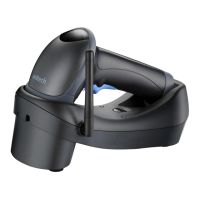31
Match
Format:
MATCH, P0 ,"C0" ,P1, "C1" ,...,Pn, "Cn" ,
A pair of Pn and Cn forms a Match field (n indicates a sequential integer number). To define a
Match field, two parameters are required. The first is character position (Pn) and the second is
a string (Cn). Character position means the number of characters, counting from the first
character to the one to be positioned in the data record.
For example, in the following data
BARCODE
'B' has position 1.
'A' has position 2.
...
'E' has position 7.
When Match field is defined, the original data string starts at the position specified by the first
parameter P and will be compared with string "C". If the match is identical, processing of
current Formula continues.
The position parameter P could be a wild character * for any position or # for the last position
in the original data. If # is used,
#-N
is valid. Here N is a digit parameter.
The string parameter C can include * for any digit or # for any letter.
Examples:
MATCH,3,"AB",#,"?",
Checks if the original data has 'A' at position 3, 'B' at position '4' and last character is '?'.
MATCH , 10 , " *A*",
Checks if the original data includes a string with a digit as first character and "A*" followed at
position 10.
Modifier
Modifier has two types of fields: A-String and O-String to define the output contents.
A-String
Format:
"abc..."
'a', 'b' and 'c' in the string can be any character.
A-String defines a string of characters to be added to the output. For example, if the original
data is:
BCD
and output string is
BarCoDe
"ar", 'o' and 'e' in output string are added strings and can be defined by A-Strings.
Note: If '*' on Programming Sheet are included in A-String, one interblock delay defined by
Group 2 will be inserted.

